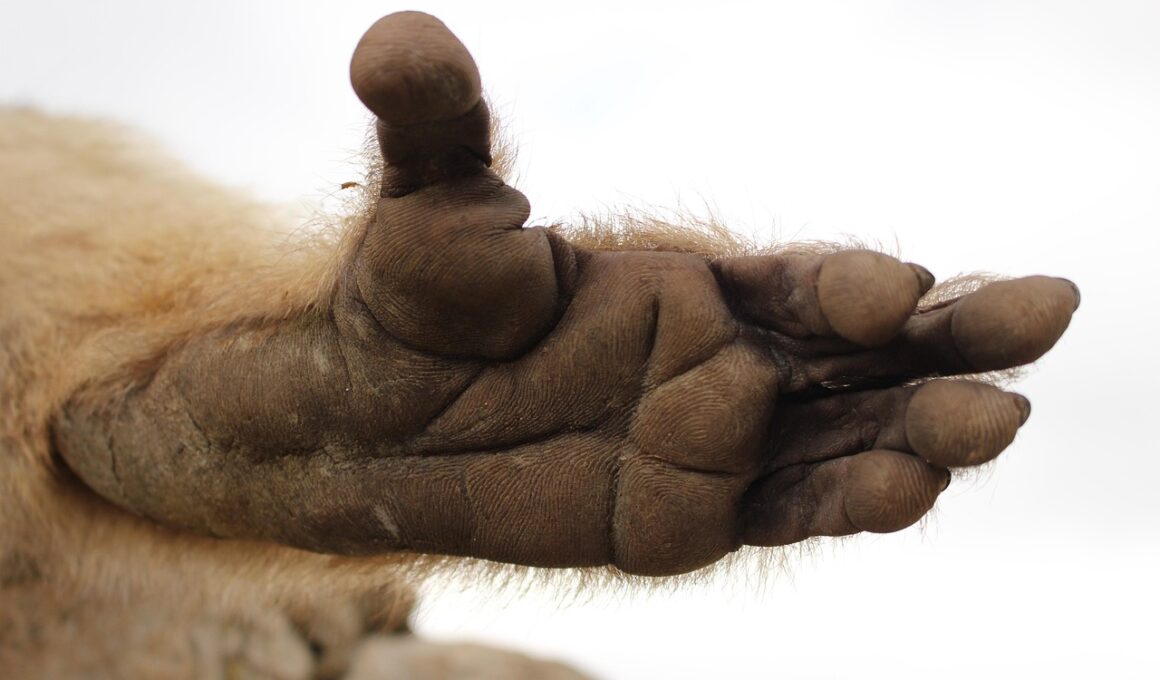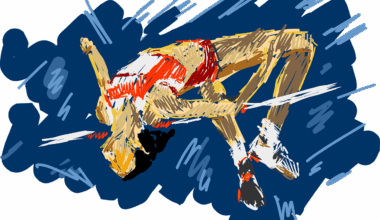Biomechanical Aspects of Lower Limb Motion
The biomechanics of lower limb motion is vital for understanding human movement efficiency and injury prevention. The lower limbs are integral components that support locomotion, balance, and various athletic activities. Key elements include the joints, muscles, tendons, and ligaments that facilitate movement. The major joints involved are the hip, knee, and ankle, all of which play distinct roles in different phases of motion. Each joint exhibits unique kinematic and kinetic properties that are crucial during activities such as walking, running, and jumping. Understanding the mechanics involved requires analyzing how forces are distributed throughout the limbs. For instance, during running, the ground reaction forces can be several times the body weight, making it essential to have proper lower limb alignment and function. Muscle activation patterns also play a significant role in propulsion and stabilization. By studying lower limb biomechanics, researchers can devise training and rehabilitation programs to help athletes optimize performance while minimizing the risk of injuries. Furthermore, investigating different surfaces and footwear can influence biomechanics significantly, which highlights the importance of this field in both sports and daily living.
One significant aspect of lower limb biomechanics includes gait analysis, which is crucial for understanding walking patterns. Gait analysis watches the movement of the lower limbs and evaluates performance metrics, including stride length, cadence, and joint angles. Understanding these parameters aids clinicians and coaches in identifying abnormalities and formulating corrective measures. Gait typically consists of two main phases: the stance and swing phases. Each phase is characterized by specific muscle engagements and joint rotations, contributing to a fluent movement pattern. Identifying deviations in normal gait can assist in diagnosing conditions such as flat feet or other structural issues. Biomechanical tools such as force plates and motion capture systems help to collect accurate data regarding lower limb movements, facilitating precise assessments. Ample research in biomechanics delves into how specific interventions, like orthotics or footwear changes, affect gait kinematics. Additionally, a deeper understanding of the kinematic chain—how individual joint movements influence the entire limb—reveals insights into injury mechanisms. Such knowledge is indispensable for developing rehabilitation protocols for those who have experienced lower limb injuries and for enhancing athletic performance.
Muscle Function and Joint Mechanics
Mus cle function in the lower limbs offers insight into how muscles contribute to movement efficacy. Muscles work in coordinated patterns to facilitate activities such as running, jumping, and balancing. Muscle tension and contraction rates are essential factors influencing the performance of lower limb actions. Additionally, the arrangement of muscle fibers, whether distributed for strength or endurance, determines the muscle’s overall capability. The knee joint is particularly complex, as it involves interactions between multiple muscles and ligaments that provide stability. For example, the quadriceps and hamstrings work antagonistically to control motion and support rapid changes in direction. The angle and position of joints affect mechanical advantage, indicating how favorably they can produce movement. This is evident during squatting, where joint angles impact the load placed on muscles and tendons, significantly influencing energy efficiency. Biomechanical analysis helps in observing how varying resistances, muscle contractions, and joint angles affect performance during activities. This multiplicity urges strength and conditioning professionals to tailor training programs specific to athlete requirements to optimize lower limb functionality while preventing injuries.
The role of joints in lower limb biomechanics cannot be overemphasized. Each joint encompasses a range of motion crucial for achieving efficient and effective movement. The hip joint allows for a wide range of motion, facilitating activities that require high flexibility and power, such as sprinting or kicking a ball. Similarly, the knee joint offers extension and flexion that are essential in various athletic events. The ankle joint contributes critical stability and support during dynamic movements. Joint stability is influenced by static and dynamic structures, including ligaments and muscles surrounding the joints. A well-functioning joint encompasses optimal range without sacrificing stability. Over time, improper biomechanics can lead to joint deterioration and soft tissue injuries. For example, misalignments during movements can result in conditions such as runner’s knee or Achilles tendonitis. To maintain health in lower limb joints, it is vital to incorporate strength training, stretching, and ankle stability drills in training regimens. Regular seminars and research efforts focus on preventive measures enhancing joint longevity and performance improvement strategies targeting joint health in active individuals.
Impact of Training Techniques
Training techniques play a pivotal role in shaping the biomechanics of lower limb motion. Effective training programs should incorporate a variety of exercises to promote different aspects of muscle activation and joint coordination. Resistance training, plyometric exercises, and functional movements must be included to build strength, speed, and power. Plyometric training, for instance, encourages rapid muscle contractions essential for jumping and sprinting. This type of training conditions muscles to absorb and release energy efficiently, promoting better lower limb motion mechanics. Likewise, strength and flexibility exercises enhance muscle performance and joint range of motion, which is key in preventing injuries during high-intensity workouts. Coaches and trainers need to monitor athletes’ techniques continually to ensure that movements are biomechanically sound. Poor technique can lead to chronic injuries and hinder athletic performance. Hence, educating athletes about the significance of maintaining biomechanical alignments is crucial. Variables, such as fatigue and body mechanics, must also be considered to ensure optimized performance. Incorporating biomechanics within training methods is essential for achieving peak physical performance and enhancing the longevity of athlete careers.
Injuries in the lower limbs are often linked to biomechanical factors, necessitating a thorough understanding of their mechanisms to prevent them effectively. Common issues include ligament injuries, tendonitis, and stress fractures, frequently arising from inadequate biomechanics. Analyzing repetitive motion and assessing the forces at play during athletic events are fundamental practices. For instance, runners exhibit specific injury patterns related to their foot strike—heel, midfoot, or forefoot—which can significantly affect their susceptibility to injuries. Evaluating gait patterns can reveal underlying weaknesses or compensations that result in overuse injuries. By implementing targeted rehabilitation strategies, like physiotherapy, individuals can address specific biomechanical deficits. Proprioceptive training is essential in re-establishing lower limb control and preventing recurrences. Educators and trainers focusing on biomechanics can help to develop tailored injury prevention programs for athletes. Utilizing video analysis systems to assess lower limb motions can help refine technique and mitigate injury risks. Ultimately, enhancing lower limb biomechanics empowers athletes with the knowledge to remain competitive while promoting long-term physical health through informed training and lifestyle choices.
Future Directions in Biomechanics Research
The future of biomechanics research holds exciting prospects for understanding lower limb motion in greater depth. Advancements in technology and analytical techniques will yield more precise movement assessments, allowing researchers to explore nuances in biomechanics that were previously unexamined. Innovations such as wearable sensors and real-time motion capture systems enhance data collection and enable continuous progression monitoring in athletes. Further research will likely focus on individualized biomechanics, addressing the need for personalized training and rehabilitation protocols depending on each athlete’s unique movement patterns and injury history. As the field evolves, it may incorporate insights from fields like neuroscience, merging knowledge from muscle control to optimize athletic performance. Integration of biomechanics with other disciplines may lead to comprehensive models providing holistic approaches to athlete care and training. Additionally, understanding the impact of environmental factors, such as playing surfaces, will continue to be crucial in informing training decisions. By investigating biomechanical principles further, the future of lower limb performance can be enhanced, minimizing injury risks while maximizing athletic potential.
Overall, a thorough knowledge of the biomechanics of lower limb motion plays a substantial role in optimizing human performance and preventing injuries. Advances in research and technology continuously pave the way for a deeper understanding of lower limb dynamics. By assessing biomechanical factors, practitioners can develop innovative strategies to improve athletic performance significantly. As more studies focus on specific aspects of biomechanics, effective interventions can be created that not only enhance performance but also safeguard athletes against injuries. Coaches and trainers equipped with a solid foundation in biomechanics are better prepared to educate athletes on the significance of movement quality. Furthermore, collaboration between researchers and practitioners is critical for translating biomechanical findings into practical applications to benefit athletes. Enhanced performance, recovery strategies, and injury prevention are achievable when biomechanics is embraced actively across various sports disciplines. Educational initiatives can foster awareness surrounding the importance of biomechanics in training programs, benefitting not just elite athletes but also recreational participants. As this field continues to evolve, it will shape the future trajectory of sports science, ensuring a more comprehensive understanding of human movement.


